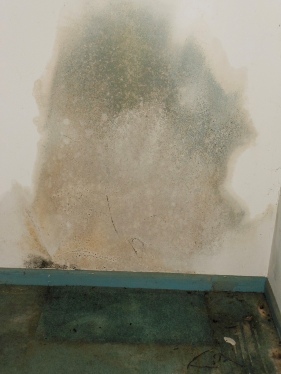Blue Mold
Blue mold, as the name implies, is the bluish or greenish fungus belonged to the Penicillium genus–the same type used to make the antibiotic penicillin.
While the mold is considered harmless when deliberately cultivated on edible blue cheese, it is known to produce dangerous toxic compounds when growing on spoiled foods, walls, insulation, etc.
Now, here’s the thing I want you to know. Not all blue mold is toxic. Blue mold on cheese contains Penicillium Roqueforti if not Penicillium Glaucum that do not produce toxins. Meanwhile, other common types of blue mold on foods, walls, or damp carpeting can produce toxins, which, when ingested, can cause several health problems.
Where Does Blue mold Grow?
Blue mold or Penicillium is the culprit behind food spoilage and known to cause health problem when consumed. The presence of damp wood or walls can be the perfect spot for the organism to grow and can trigger an allergic reaction that may cause asthma, respiratory problem, or digestion problem when swallowed.
In general, this type of mold loves the area with high humidity level, dampness, and lack of proper air circulation. The mold is easily recognizable due to its characteristics; velvety texture, blue or green colors surface.

What is The Health Effects of Blue Mold?
Major health issues caused by blue mold infestation is a terrible respiratory problem when it develops indoors. The spores can travel throughout the room, and inhaled by people since it easily becomes airborne. When ingested, the main health issues are pulmonary inflammation and asthma.
People with a sensitive, allergic reaction or immune disorder should be even more careful with the blue mold exposure because it can lead to serious health complications. In most cases, people have mistaken the blue mold infection as light symptoms that make them left it untreated. The unawareness can cause prolonged exposure that becomes chronic sinusitis or swollen throat that can be life-threatening.
If you suspect any blue mold infestation, try to have further examination when you experience the following symptoms:
- Itchy eyes
- Constant sneezing
- Nasal congestion
- Itchy lips
- Running nose
- Etc
BLUE MOLD REMOVAL
Blue molds spread very fast from one area to another so it’s essential to remove them whenever detected. If you spot some bluish green mold at one corner there are chances of their existence in other places too, so first and foremost check other parts of your home. To clean them all you should know their room at your mansion. If you have a huge house and storage place including ducts and such places which are unreachable then it is recommended to call a professional to inspect all the susceptible places of your house. Such places like ventilation ducts, AC ducts, Pipes and inside walls are hard to look over thus you need help for the same.
If you want to do it by yourself then you need certified mold testing kits available in market to detect mold growing areas in your home. If you find them on non porous surfaces like tiles, floors near the sink then clean them with antimicrobial cleanser like Foster 40 80 but if you find their growth on porous surface like carpet, mattresses it’s better to remove them completely because if you clean them they are removed temporarily and grows back again.
During this removal process always take necessary precautions like wearing a respiratory mask, gloves and cover yourself fully so that the pores dispersed in air during cleaning does not get in contact with your body and find a room in your lungs.
PROFESSIONAL MOLD REMEDIATION
It’s a complicated task which needs time and energy. Most importantly you are not sure that it will go astray totally from your house. It is better to go for a professional mold removal cleaning staff which will inspect your home and then take necessary remedial precautions to remove them completely.


